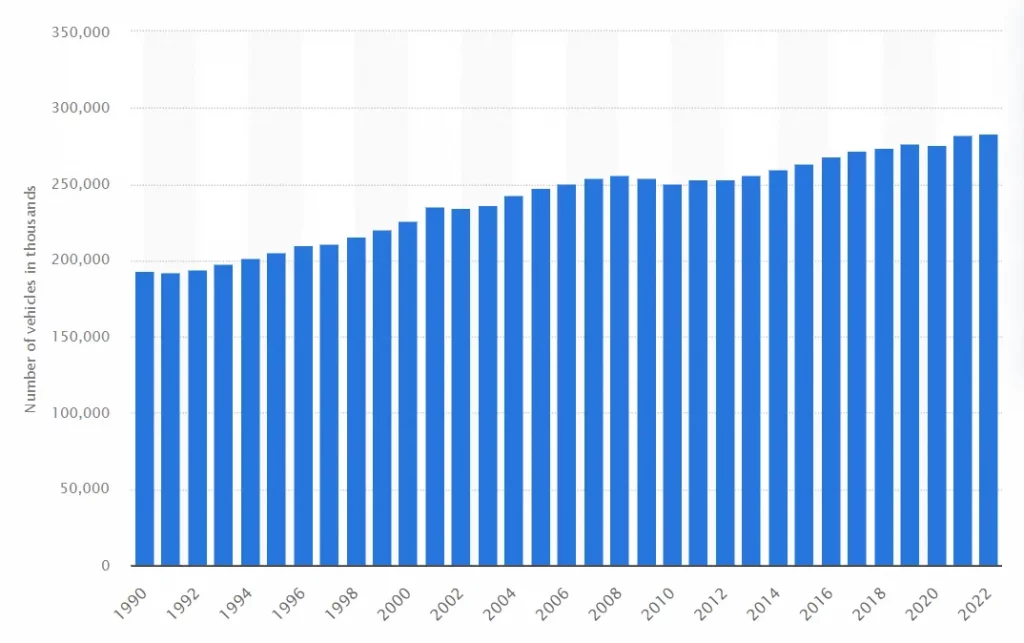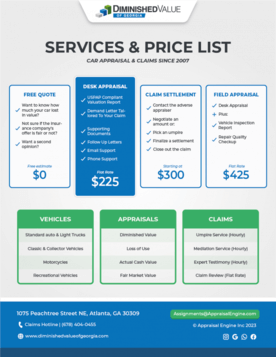Imagine a journey back to 1990 – a time when the automotive landscape in the United States was quite different from today. Picture the roads less congested, the variety of vehicles more limited, and the concept of electric cars almost a distant dream.
Fast forward to 2022, and you’ll find a transformed scenario, with a vast number of vehicles, each telling a unique story about American society’s evolution over these three decades.
US Vehicle Registrations: The Road from 1990 to 2022 (PDF)

Historical Overview
In 2022, the United States reached a milestone with approximately 283.4 million vehicles registered, a staggering 46.7% increase compared to 1990. This figure includes a diverse array of vehicles: passenger cars, motorcycles, trucks, buses, and others, painting a picture of a nation on the move.
Market Dynamics
The U.S. stands as one of the world’s largest automobile markets. In 2021 alone, there were more than 13.8 million new light vehicle registrations. However, domestic automobile production saw a decline, falling to around 1.6 million units in 2021 and struggling to rebound in 2022.
This contrast between high registration numbers and lower domestic production highlights a significant reliance on vehicle imports from countries like Japan, Mexico, and Canada.
Leading Manufacturers
At the forefront of the U.S. automobile industry are General Motors and Ford. In 2022, the Ford brand emerged as the top-selling car brand in the U.S., with approximately 1.8 million vehicles sold.
The company’s legacy dates back to its founding in 1903 by Henry Ford, a pioneer in large-scale car manufacturing and the introduction of production methods like the assembly line.
Insights and Trends
The 46.7% increase in vehicle registrations from 1990 to 2022 tells a story beyond numbers. It reflects technological advancements, changing consumer preferences, and economic shifts. The rise in light truck sales to 10.9 million units in 2022, for example, indicates a growing preference for larger personal vehicles.
Wrapping it up
The journey from 1990 to 2022 in the U.S. automotive sector showcases a nation’s evolving relationship with vehicles. From a symbol of freedom and progress to a necessity intertwined with daily life, vehicles continue to shape the American landscape.
As we stand at the cusp of another decade, one wonders: What new chapters will the ever-changing world of automobiles bring to the story of America?






